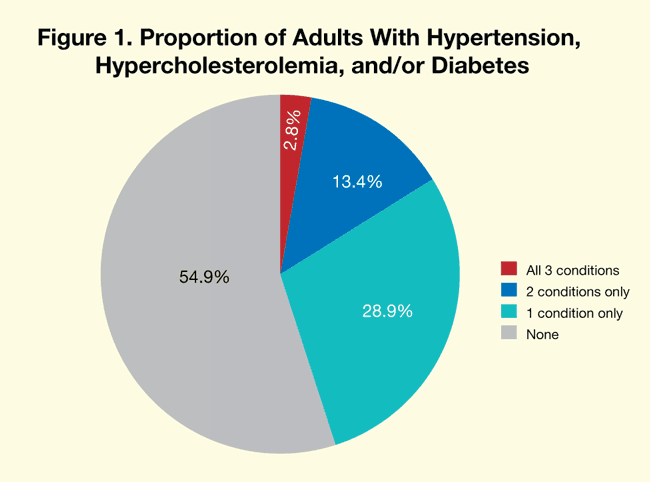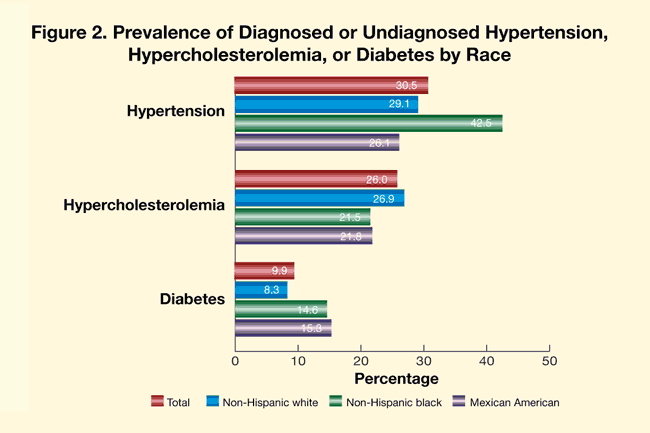- CDC
- Heart Failure
- Cardiovascular Clinical Consult
- Adult Immunization
- Hepatic Disease
- Rare Disorders
- Pediatric Immunization
- Implementing The Topcon Ocular Telehealth Platform
- Weight Management
- Monkeypox
- Guidelines
- Men's Health
- Psychiatry
- Allergy
- Nutrition
- Women's Health
- Cardiology
- Substance Use
- Pediatrics
- Kidney Disease
- Genetics
- Complimentary & Alternative Medicine
- Dermatology
- Endocrinology
- Oral Medicine
- Otorhinolaryngologic Diseases
- Pain
- Gastrointestinal Disorders
- Geriatrics
- Infection
- Musculoskeletal Disorders
- Obesity
- Rheumatology
- Technology
- Cancer
- Nephrology
- Anemia
- Neurology
- Pulmonology
Almost Half of Adults Have Hypertension, Hypercholesterolemia, or Diabetes
Forty-five percent of adults in the United States have hypertension, high serum total cholesterol levels, or diabetes, according to a recent report from the CDC.1 Of these persons, approximately 13% have 2 conditions and nearly 3% have all 3 (Figure 1). In nearly 15% of those with 1 of these conditions, it remains undiagnosed.

Forty-five percent of adults in the United States have hypertension, high serum total cholesterol levels, or diabetes, according to a recent report from the CDC.1 Of these persons, approximately 13% have 2 conditions and

nearly 3% have all 3 (Figure 1). In nearly 15% of those with 1 of these conditions, it remains undiagnosed.
Among racial groups, prevalence of hypertension, hypercholesterolemia, and diabetes varies (Figure 2). Non-Hispanic black persons are more likely to have at least 1 of the 3 conditions.
“These results emphasize the need for research to identify the reasons for the race/ethnicity differences and to identify factors that could be modified to mitigate the race/ethnicity differences,” according to the authors.1

Another study using data from the National Health and Nutrition Examination Survey showed that in adults aged 40 to 74 years, the average number of medications to control diabetes, hypertension, and hypercholesterolemia increased 121%. These results were based on studies from 1988 to1994 and 2001 to 2006 (Figure 3).2
References:
References
1. Fryar CD, Hirsch R, Eberhardt MS, et al. Hypertension, high serum total cholesterol, and diabetes: racial and ethnic prevalence differences in U.S. adults, 1999-2006. National Center for Health Statistics.
http://www.cdc.gov/nchs/data/databriefs/db36.htm. Published April 2010. Accessed April 30, 2010.
2. King DE, Ellis TM, Everett CJ, Mainous AG 3rd. Medication use for diabetes, hypertension, and hypercholesterolemia from 1988-1994 to 2001-2006. South Med J. 2009;102:1127-1132.
